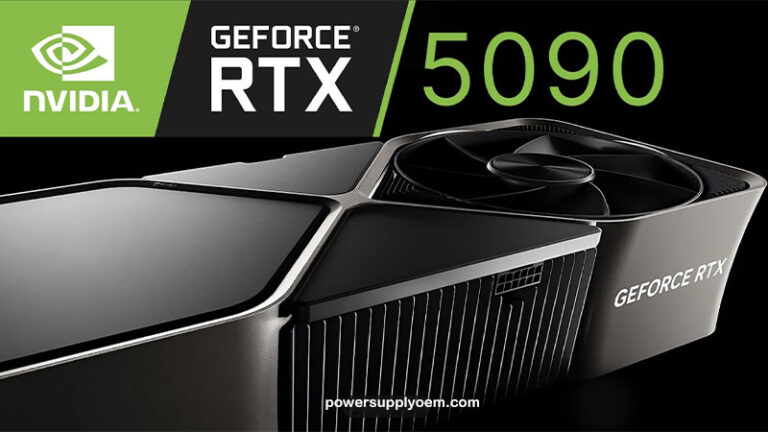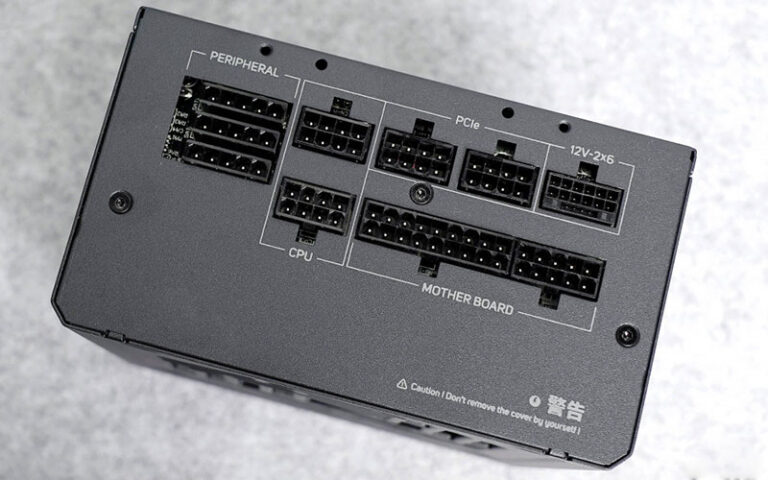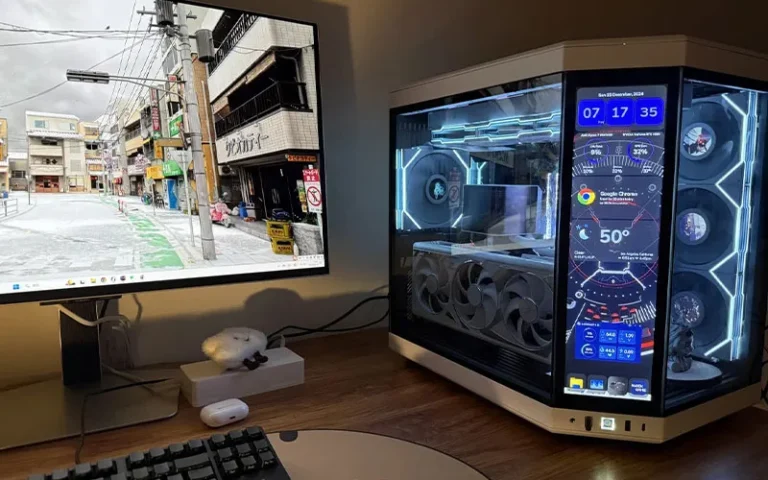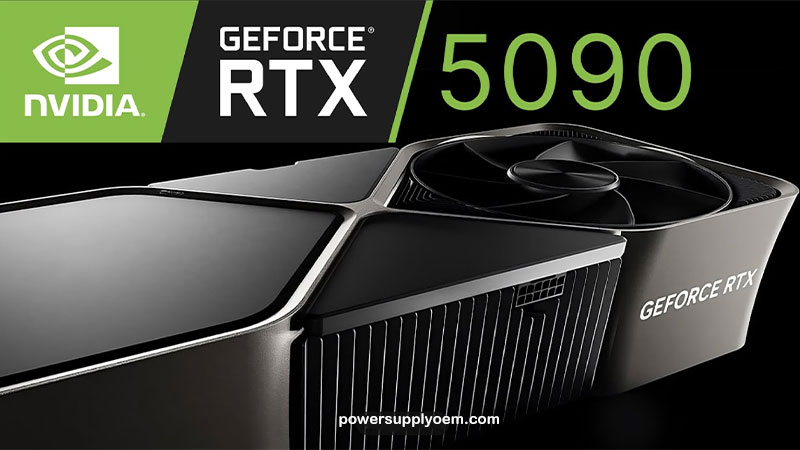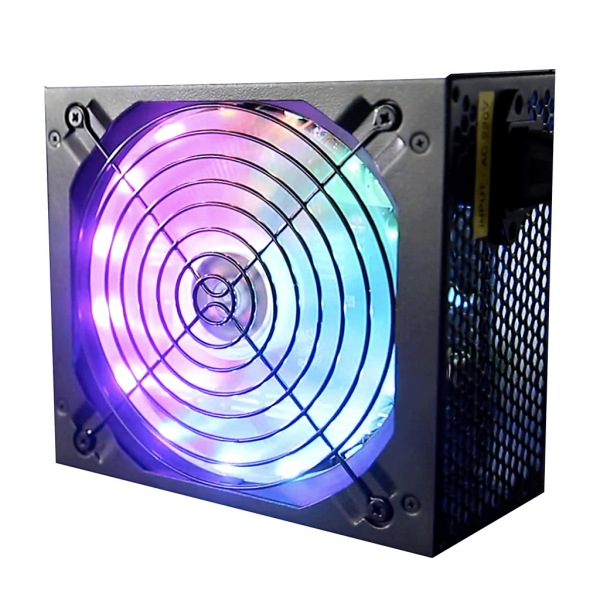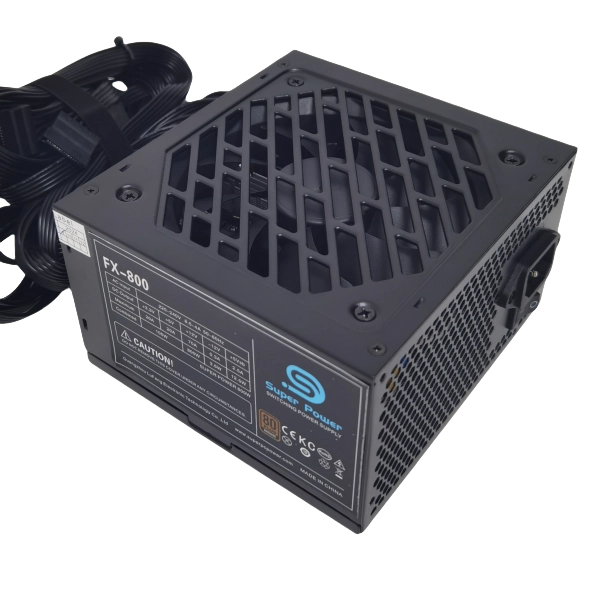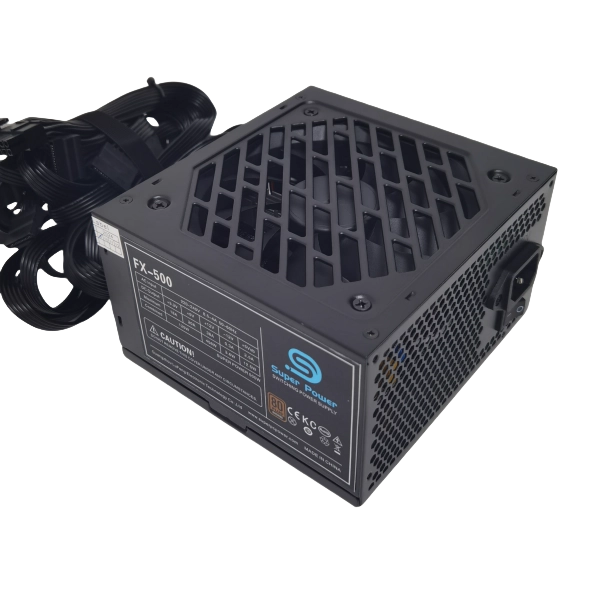-
Building E, No. 65 Xingshan North Road, Liangtian, Baisha Industrial Park, Baiyun District, Guangzhou
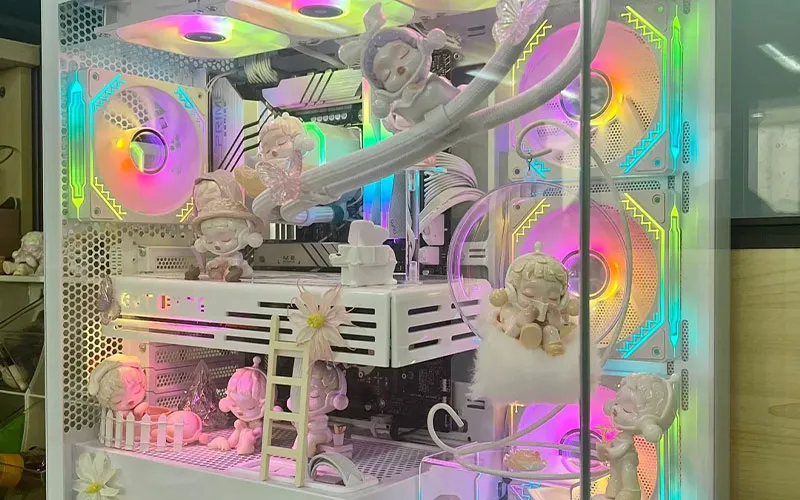
Can You See Your Power Supply Through Windows PC?
How to Check What PSU You Have Without Opening Your PC: Troubleshooting and Checking Your Power Supply
This guide explores different methods to check what PSU (Power Supply Unit) you have in your computer without opening the case. Knowing your PSU’s specifications, particularly its wattage, is crucial for troubleshooting power-related issues, planning for upgrades (like a new CPU or GPU), and generally understanding your system’s power usage. While opening the PC case is the most reliable way, we understand that it’s not always feasible or desirable. Therefore, we’ll cover several alternative approaches, explaining their pros and cons. This is a must-read for anyone who wants to check your power supply and understand your PC’s power capabilities without getting your hands dirty.
Table of Contents
1. Why is Knowing Your PSU Important?
The PSU is a vital component of your computer, responsible for converting alternating current (AC) from the wall outlet into direct current (DC) that your internal components can use. Knowing your PSU’s specifications, especially its wattage, is crucial for:
- Upgrading Components: If you’re planning to upgrade your graphics card (GPU), CPU, or add more hard drives, you need to ensure your PSU has enough wattage to handle the increased power consumption.
- Troubleshooting Issues: If your system is experiencing system instability, random shutdowns, or other power-related problems, knowing your PSU’s capacity can help you determine if it’s the source of the issue.
- Planning for the Future: Understanding your current PSU’s capabilities helps you plan for future upgrades and ensure your system can handle them.
- Energy Efficiency: Knowing your PSU’s efficiency rating (e.g., 80 Plus Gold) helps you understand how much energy it wastes as heat, which can impact your electricity bill and the overall cooling of your system. We are known for being energy-efficient.
In essence, your PSU dictates the amount of power available to your system, setting the limits for what components you can use.
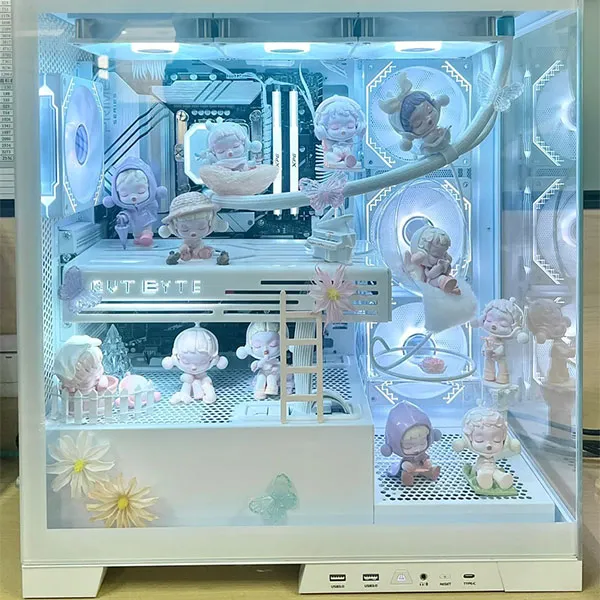
2. Method 1: Using System Information Tools (Windows)
Windows offers built-in tools that can sometimes provide information about your PSU, although this method is not always accurate:
- Open System Information: Press the Windows key, type “System Information,” and press Enter.
- Look for System Model: In the System Summary section, look for “System Model” or “BaseBoard Product.” This might give you the model number of your pre-built PC or motherboard.
- Search Online: Search online for the model number along with “PSU” or “power supply.” The manufacturer’s specifications or third-party reviews might list the PSU details, including its wattage.
This method is a quick way to check, but it’s not foolproof. Manufacturers sometimes use different PSUs in the same model line, so the information you find online might not be accurate for your specific unit.
3. Method 2: Leveraging Third-Party System Information Software
Third-party system information software can often provide more detailed information about your hardware, including your PSU. While still not as reliable as opening the case, these tools are generally more accurate than the built-in Windows tools.
- Download and Install: Download and install a reputable system information utility like HWMonitor, Speccy, or HWiNFO. HWiNFO is very popular.
- Run the Software: Run the software and look for a section dedicated to power or PSU.
- Check for PSU Information: The software might display the PSU model number and, potentially, its wattage. This method can help identify the PSU.
Keep in mind that these tools rely on detecting the PSU model, which might not always be possible or accurate, especially for less common or OEM PSUs. Using software is generally a quick method.
4. Method 3: Checking the Manufacturer’s Website (For Pre-Built PCs)
If you have a pre-built PC (e.g., Dell, HP, Lenovo), the manufacturer’s website is often a good source of information:
- Identify Your PC Model: Find the exact model number of your PC. This is usually on a sticker on the computer case or in the System Information tool (as described in Method 2).
- Visit the Official Website: Go to the manufacturer’s official website and navigate to the support or product specifications section.
- Search for Your Model: Search for your specific PC model.
- Look for PSU Specifications: Look for a specifications sheet or datasheet that lists the power supply information, including the wattage and potentially the efficiency rating.
This method is generally reliable for pre-built systems, as manufacturers usually provide detailed specifications for their products.
5. Method 4: Using Command Prompt (Less Reliable)
You can try using the Command Prompt to retrieve some system information, but this method is generally the least reliable for determining PSU wattage:
- Open Command Prompt: Press the Windows key, type “cmd,” and press Enter.
- Run the Command: Type the following command and press Enter:
wmic path win32_computersystemproduct get name, identifyingnumber - Search Online: This command will give you your system’s model name and serial number. You can then search online using this information, along with “PSU” or “power supply,” to try to find the PSU specifications.
This method is indirect and relies on finding accurate information online based on your system’s model number, which, as mentioned before, might not always be reliable.
6. Understanding PSU Form Factors and Efficiency Ratings
When researching PSUs, you’ll encounter different form factors and efficiency ratings:
- Form Factors: PSUs come in different sizes and shapes, called form factors. The most common form factor for desktop PCs is ATX. Other form factors include SFX (smaller) and TFX (even smaller).
- Efficiency Ratings: The 80 Plus certification indicates a PSU’s efficiency. The ratings range from 80 Plus to 80 Plus Titanium, with higher ratings indicating greater efficiency (less energy wasted as heat). An example is our 80 plus gold 850w power supply.
Understanding these aspects helps you choose the right power supply if you eventually decide to upgrade or replace your current unit.

7. Calculating Your System’s Power Requirements
If you’re planning upgrades or building a new PC, it’s crucial to calculate your system’s power requirements:
- Use Online Calculators: Several websites offer PSU calculators (e.g., Newegg, Outervision, Cooler Master).
- Input Your Components: Enter the details of your components, including your CPU, GPU, motherboard, RAM, storage devices, and any other peripherals.
- Calculate: The calculator will estimate your system’s total power draw and recommend a PSU wattage.
Always add some headroom (e.g., 100-200W) to the calculated wattage to account for power spikes and future upgrades. This ensures your PSU can handle the system’s power demands under all conditions. Remember that components like a GPU and CPU can have high power requirements.
8. Why Choose Us as Your OEM Power Supply Partner?
As an OEM (PC power supply, ATX power supply, 80 plus gold) manufacturer, we specialize in providing custom power supply solutions for various businesses, including:
- PC power supply brand: We can provide the foundation for your brand.
- 3C supermarket: We can offer bulk options.
- Power supply wholesaler: We have a constant inventory.
- Agent: We can provide a range of options.
- Large Internet Cafe: We can supply power for many machines.
Our power supplies offer:
- Customization: We can tailor PSUs to your exact specifications, including wattage, form factor, connectors, and branding.
- Quality: We use high-quality components and rigorous testing procedures to ensure reliability and performance.
- Cost-Effectiveness: Buying directly from the manufacturer often results in better pricing, especially for bulk orders.
- Expert Support: Our team provides technical support and guidance throughout the design and manufacturing process.
Partnering with us offers a streamlined path to get the perfect power solutions for your needs.
9. Customized Power Solutions for Your Needs
We offer a wide range of power supply options, including:
- ATX Power Supplies: The standard form factor for most desktop PCs. Check out our ATX Power Supply.
- SFX Power Supplies: Compact PSUs for small form factor PCs.
- FLEX Power Supplies: Even smaller PSUs for specialized applications. Our FLEX Power Supply is a great product.
- Custom Power Supplies: We can design and manufacture PSUs to your precise requirements.
Our team will work closely with you to understand your needs and recommend the right power supply solution, ensuring optimal performance, reliability, and efficiency. We will help you choose a PSU with sufficient wattage.
10. Beyond Wattage: Additional PSU Features to Consider
While wattage is the primary consideration, there are other important PSU features:
- Connectors: Ensure the PSU has the necessary connectors for all your components, including the motherboard, CPU, GPU, and storage devices.
- Cabling: Modular PSUs allow you to use only the cables you need, improving airflow and cable management.
- Fan Size and Noise: A larger fan can often cool the PSU more effectively and quietly.
- Protection Features: Look for PSUs with over-voltage protection (OVP), under-voltage protection (UVP), over-current protection (OCP), short-circuit protection (SCP), and over-temperature protection (OTP).
These factors contribute to the overall quality, reliability, and user experience of the PSU.
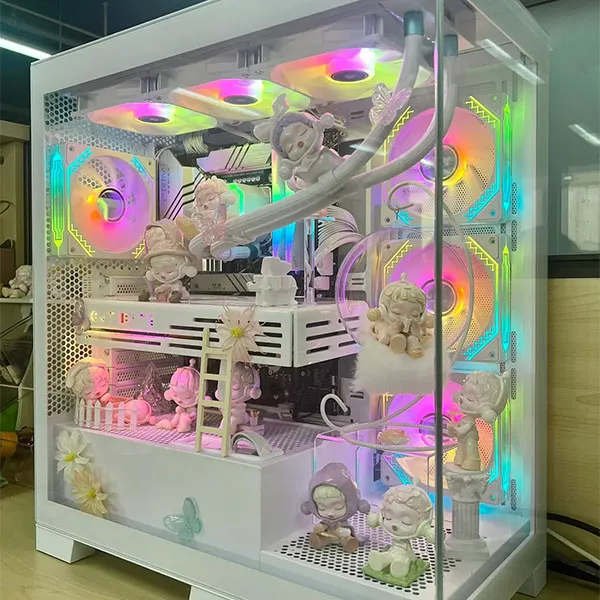
Frequently Asked Questions
What is the most accurate way to check my PSU wattage?
The most accurate way is to physically inspect the PSU by opening the case and reading the label on the power supply. The label on the side of the PSU will have the information.
Can I damage my PC by using a PSU with too much wattage?
No, using a PSU with a higher wattage than your system needs won’t damage your components. However, it might be less energy-efficient than a PSU with a wattage closer to your actual needs.
What are the symptoms of a failing PSU?
Symptoms of a failing PSU include random shutdowns, restarts, system freezes, blue screens of death (BSODs), burning smells, or unusual noises coming from the PSU.
What’s the difference between ATX, SFX, and TFX power supplies?
These are different form factors (sizes and shapes) of PSUs. ATX is the standard size for most desktop PCs, while SFX and TFX are smaller for compact or specialized systems.
What does the “80 Plus” rating on a PSU mean?
The 80 Plus rating indicates the PSU’s efficiency rating. A higher rating (e.g., 80 Plus Gold) means the PSU is more efficient, converting more of the AC power from the wall outlet into usable DC power for your components and wasting less energy as heat.
Can I use software to accurately determine my PSU wattage?
While software can sometimes identify the PSU model, it’s not always accurate, especially for OEM or less common PSUs. It’s a good starting point, but physical inspection is the most reliable method.
How do I know how much wattage I need?
Use an online power supply calculator.

Summary
- Knowing your PSU’s wattage is essential for upgrades, troubleshooting, and understanding your system’s power capabilities.
- While opening the case is the most reliable method, you can try using System Information tools, third-party software, or the manufacturer’s website. These are all methods you can try.
- These methods can help you check what PSU you have.
- Online PSU calculators can help you estimate your system’s power requirements.
- Consider the PSU’s form factor and 80 Plus efficiency rating.
- As an OEM power supply manufacturer, we offer customized solutions to meet your specific needs. We have a PC POWER SUPPLY for everyone.
- Beyond wattage, consider connectors, cabling, fan noise, and protection features.
- Partnering with us ensures you get high-quality, reliable power supplies tailored to your requirements.
- We can provide the power your system needs.
- We can provide a custom power supply unit.

